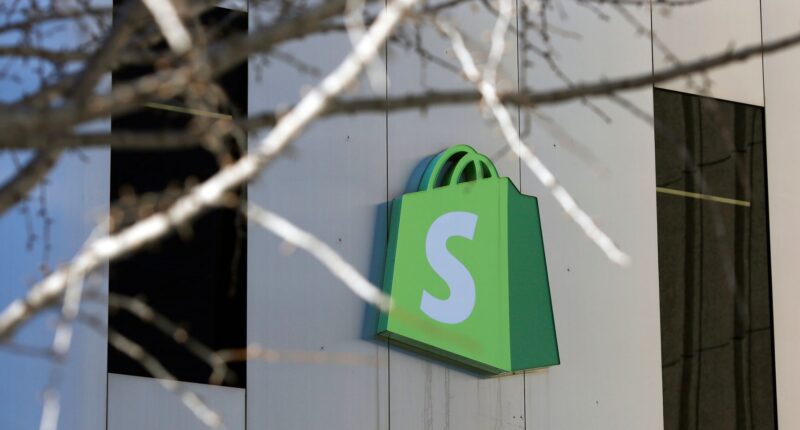
Opinions expressed by Entrepreneur contributors are their own.
Born as a way to make ecommerce technology and tools more accessible to businesses, Shopify quickly earned its name as a savior for small retailers.
So, when the company announced early this year it was launching a new product aimed at large, global retailers, many people saw it as a pivot. But as someone who has built a career helping retailers of all sizes leverage the platform to great success, the truth is, both small and large businesses have been harnessing the web builder for years.
The reality is: The market has shifted. The boom that ecommerce and other industries saw during the pandemic was not sustainable, but business leaders should pay attention to how Shopify is navigating the down economy. Indeed, companies of all stripes can learn from Shopify’s move into this new category.
Related: Want To Grow Your Ecommerce Brand? Take Advice From This Industry Expert.
Leverage your services to get more market share
Stocks surged by nearly 42% when Shopify announced its bid to appeal to larger retailers. The reason? The company faced up to where it was losing market share and found a better way to deliver.
Traditionally, enterprise retailers have leveraged a multitude of software, all of which run in tandem, each specialized for its own purpose. Although sophisticated, it’s made for a complex and often costly ecommerce solution.
This complexity of need has been the ecommerce giant’s biggest obstacle to gaining enterprise market share. The transition from these complex in-house tech solutions to an outsourced system simply seemed too complicated, but Shopify has challenged that perception. Building off its existing infrastructure, its enterprise tech stack modulates the ecosystem, allowing big retailers to choose a bespoke combination from the platform’s offerings.
As markets change, it’s more important than ever to take stock of your industry’s landscape. Ask yourself how you can leverage your existing resources to serve market segments that could add value to your company. Then, assess what your customers’ needs are. Offering different plans and customization can mean the difference between an attractive new offering and a missed opportunity.
Related: The 4 Marketing Strategies Your Shopify Store Needs to Drive Traffic
Focus on your biggest differentiator
Moving into a new category presents an opportunity, but it also comes with risk and unforeseen challenges, particularly when you’re not first to market. Focusing on what differentiates your business from its competitors is often the best way to distinguish your key value proposition as you enter new terrain.
In retail, where the point of conversion can make or break a sale, a seamless checkout experience is the holy grail. For an ecommerce player like Shopify, focusing on its digital wallet experience as it moves into the enterprise space, is a brilliant move as it brings the promise of a seamless checkout experience at scale.
Every time a customer uses Shop Pay, its digital wallet offering, the platform stores that customer’s credit card and delivery information, creating a frictionless experience the next time they purchase off any site in the network, anywhere in the world. That’s a pretty impressive value proposition for retailers that choose the platform, regardless of their size.
However crowded it may be, knowing what differentiates you as you enter into a new market, can be a key indicator of your likelihood of success. Research by McKinsey showed companies that are intentional in understanding where they create value and frequently reallocate talent to their high-value initiatives are more than twice as likely to outperform competitors.
Related: The Key Benefits of Using Shopify for Your Business
Create cross-value
When a company enters a new category, there’s always a risk of alienating its core customer base. Just look at Under Armour — once heralded the next Nike, the athletic wear brand was late to the athleisure trend, which was opening up a new market opportunity for its competitors in 2015. The company responded by launching a line of $1,500 designer trench coats, a move that didn’t jive with its mass-market consumers or the higher-end fashion customers it was designed to attract.
While Shopify’s new focus on enterprise might seem like a slight to the smaller businesses it serves, it’s actually designed to create cross-value. One needs only look to Shopify’s key differentiator, the virtual wallet system, which gets more effective the more customers use it. That means when a large brand like Mattel onboards millions of its multinational customers, the wallet fills up, creating a network effect that benefits even the most niche retailer in the shared ecosystem.
This network effect essentially allows small retailers to compete on point of sale experience with enterprise retailers, offering a more level playing field.
Of course, it’s not a panacea, but creating cross-value when you enter a new market is one way to ensure your brand builds on the value, not taking away from what’s already been created for your existing customers.
As we navigate the downturn it’s inevitable retailers and businesses in all industries will have to pivot to meet the changing needs of a shifting economy. When exploring new markets, it’s critical to keep the interests of both new and existing customers in mind and look for ways to leverage existing resources, clearly differentiate and add cross-value.
This article is from Entrepreneur.com








